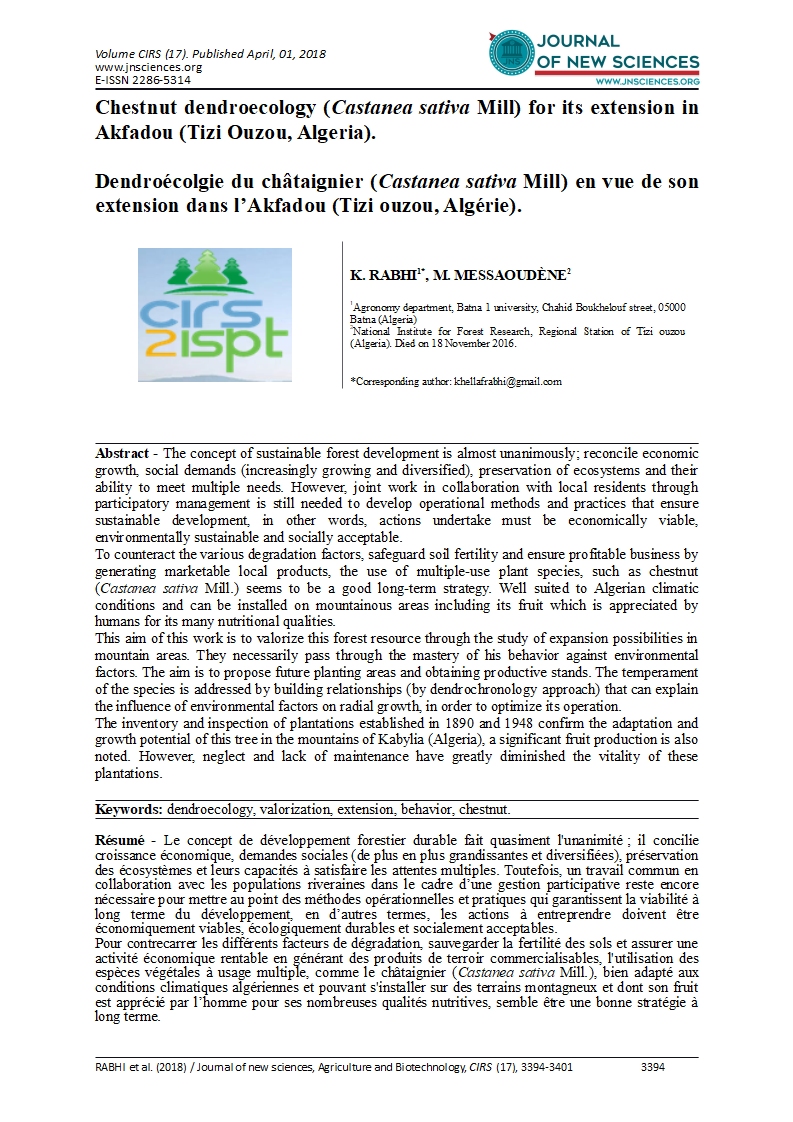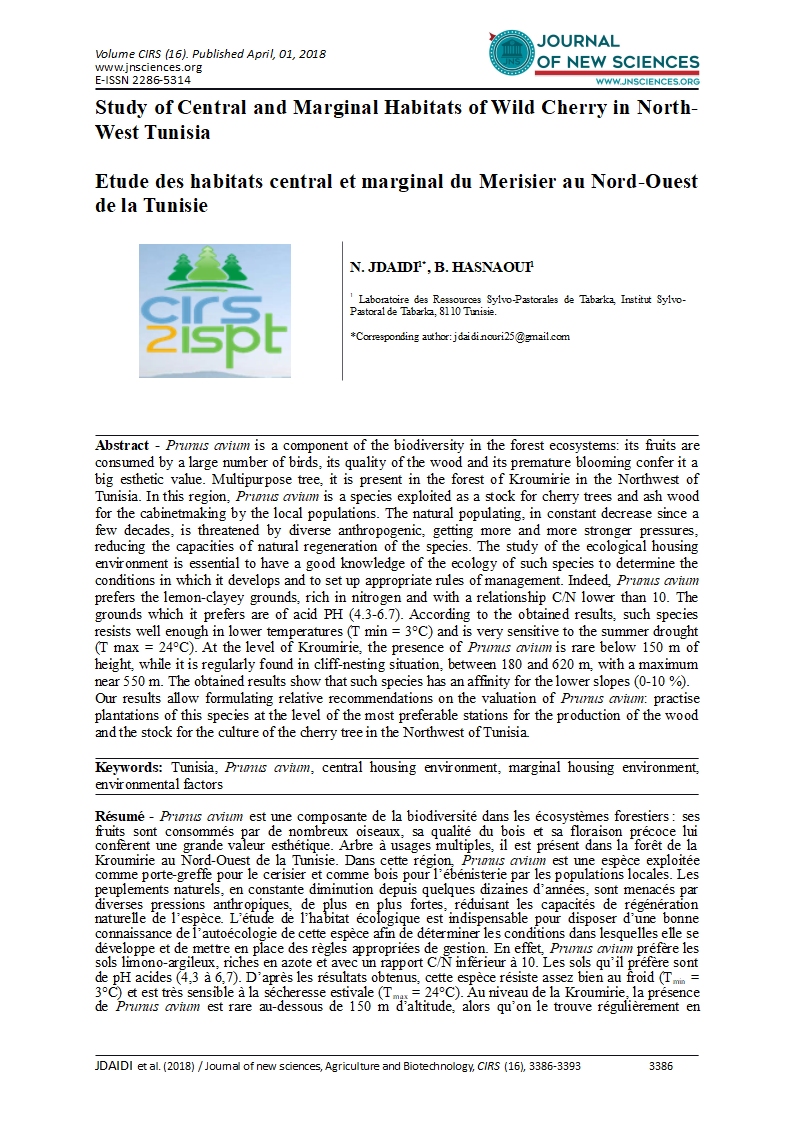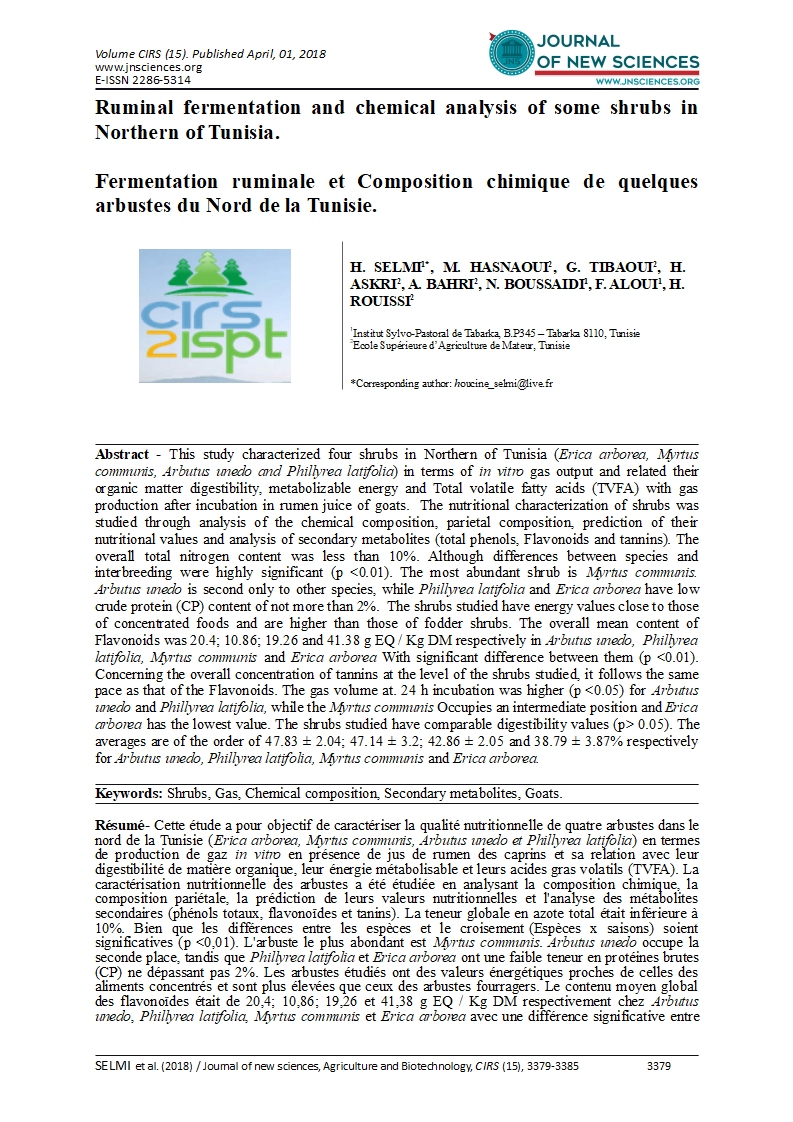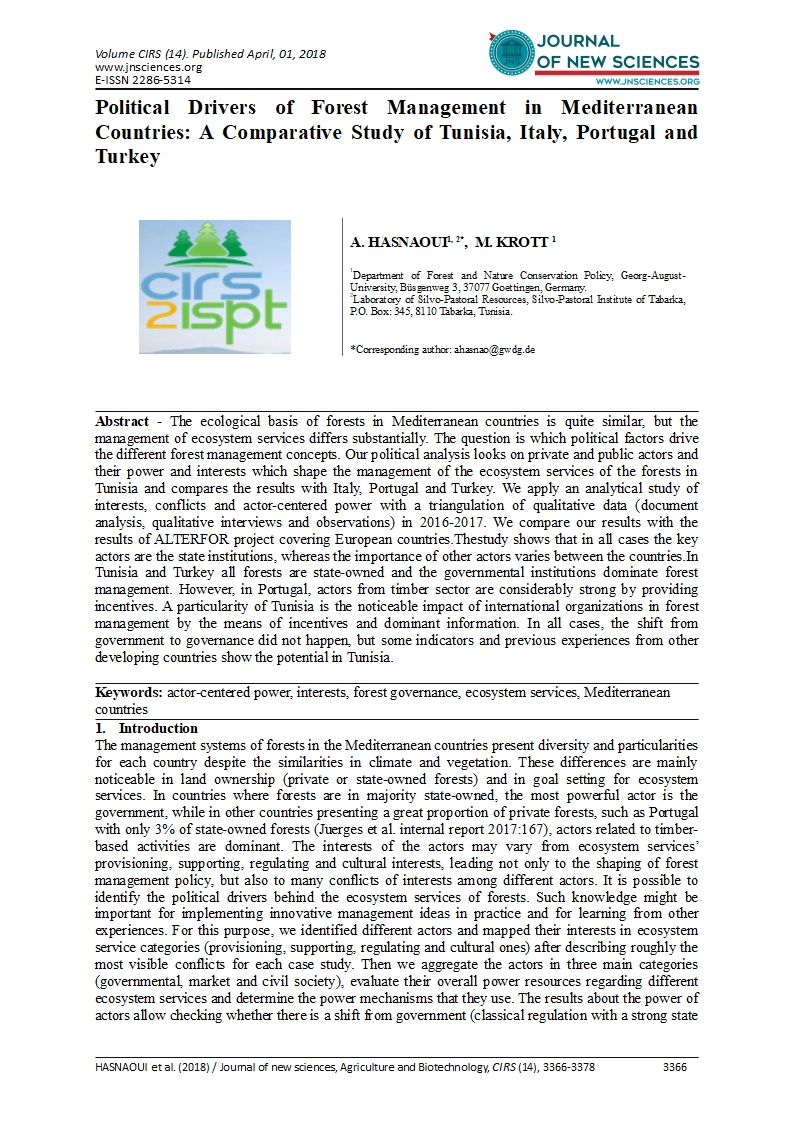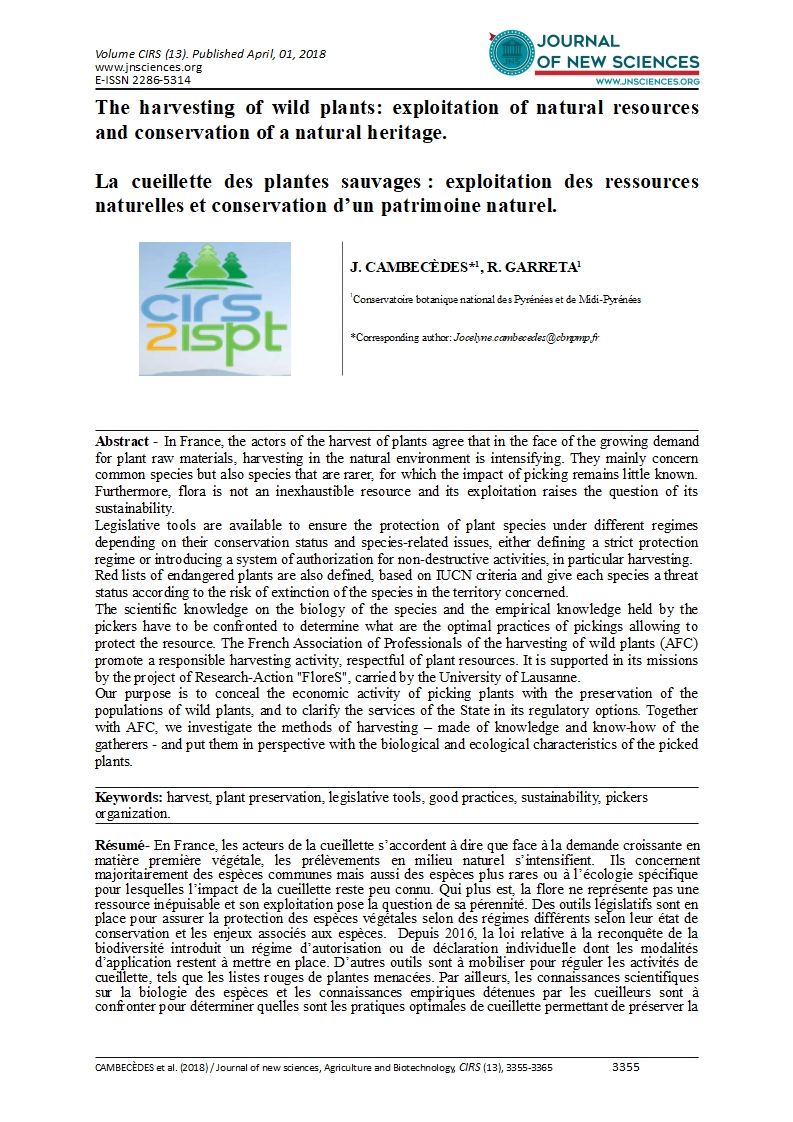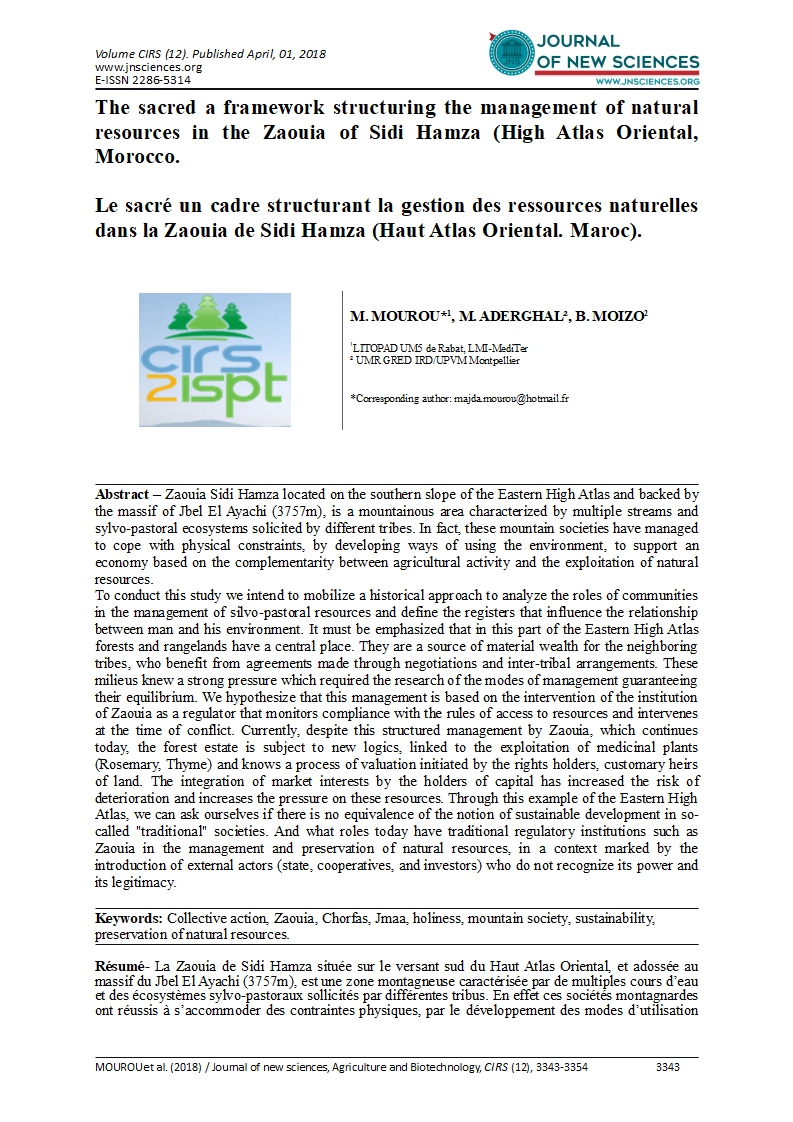- Category: VOLUME SPÉCIAL (CONFÉRENCE CIRS 2017)
- Hits: 8178
Ethnobotanical survey on the traditional use of officinal sage (Salvia officinalis L.) in Tabarka and Aïn Draham (Northwestern of Tunisia)
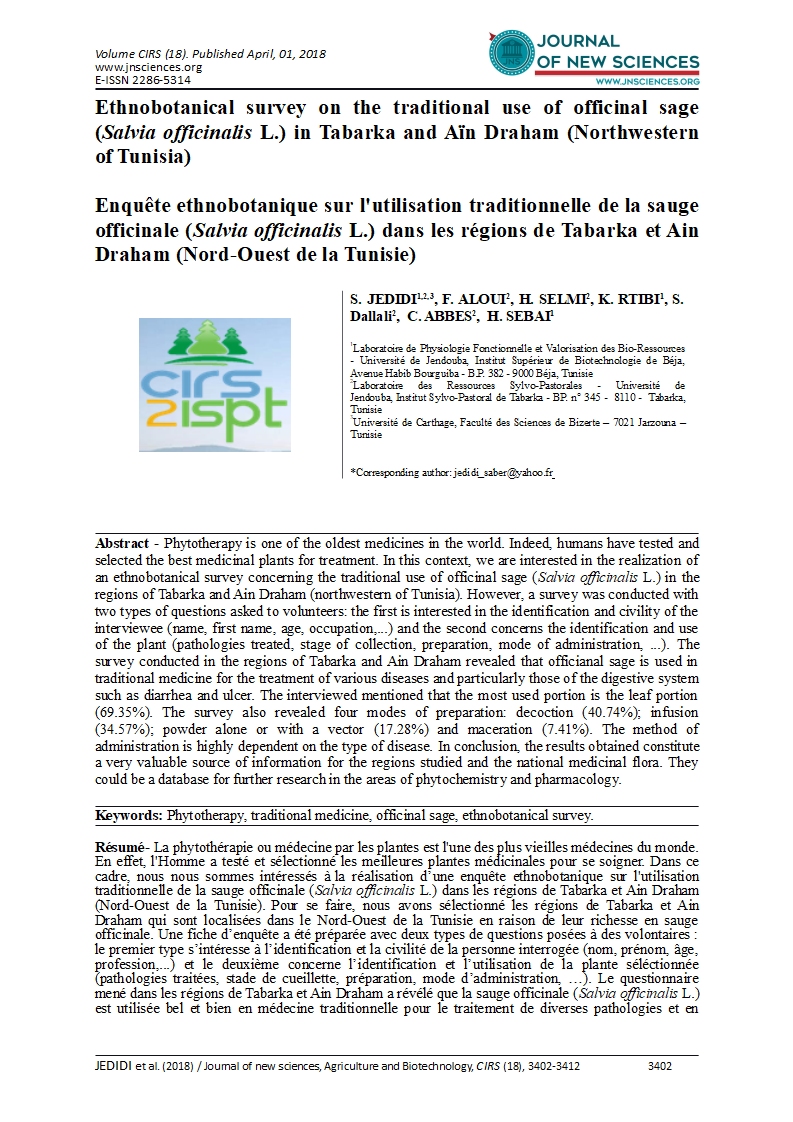
Enquête ethnobotanique sur l'utilisation traditionnelle de la sauge officinale (Salvia officinalis L.) dans les régions de Tabarka et Ain Draham (Nord-Ouest de la Tunisie)
|
|
S. JEDIDI1,2,3 F. ALOUI2 H. SELMI2 K. RTIBI1 S. Dallali2 C. ABBES2 H. SEBAI1
1Laboratoire de Physiologie Fonctionnelle et Valorisation des Bio-Ressources - Université de Jendouba, Institut Supérieur de Biotechnologie de Béja, Avenue Habib Bourguiba - B.P. 382 - 9000 Béja, Tunisie 2Laboratoire des Ressources Sylvo-Pastorales - Université de Jendouba, Institut Sylvo-Pastoral de Tabarka - BP. n° 345 - 8110 - Tabarka, Tunisie 3Université de Carthage, Faculté des Sciences de Bizerte – 7021 Jarzouna – Tunisie |
Abstract - Phytotherapy is one of the oldest medicines in the world. Indeed, humans have tested and selected the best medicinal plants for treatment. In this context, we are interested in the realization of an ethnobotanical survey concerning the traditional use of officinal sage (Salvia officinalis L.) in the regions of Tabarka and Ain Draham (northwestern of Tunisia). However, a survey was conducted with two types of questions asked to volunteers: the first is interested in the identification and civility of the interviewee (name, first name, age, occupation,...) and the second concerns the identification and use of the plant (pathologies treated, stage of collection, preparation, mode of administration, ...). The survey conducted in the regions of Tabarka and Ain Draham revealed that officianal sage is used in traditional medicine for the treatment of various diseases and particularly those of the digestive system such as diarrhea and ulcer. The interviewed mentioned that the most used portion is the leaf portion (69.35%). The survey also revealed four modes of preparation: decoction (40.74%); infusion (34.57%); powder alone or with a vector (17.28%) and maceration (7.41%). The method of administration is highly dependent on the type of disease. In conclusion, the results obtained constitute a very valuable source of information for the regions studied and the national medicinal flora. They could be a database for further research in the areas of phytochemistry and pharmacology.
Keywords: Phytotherapy, traditional medicine, officinal sage, ethnobotanical survey.

